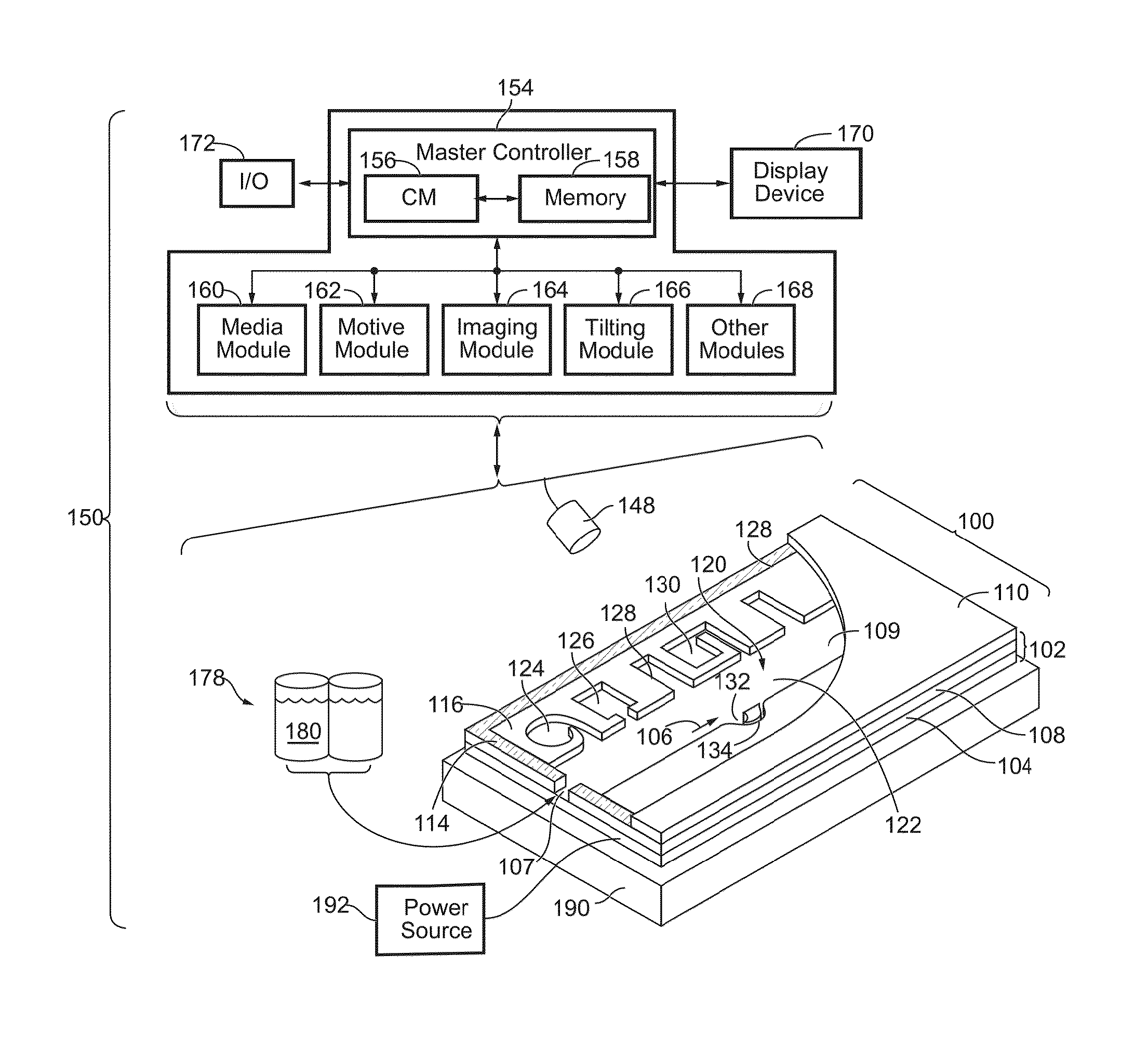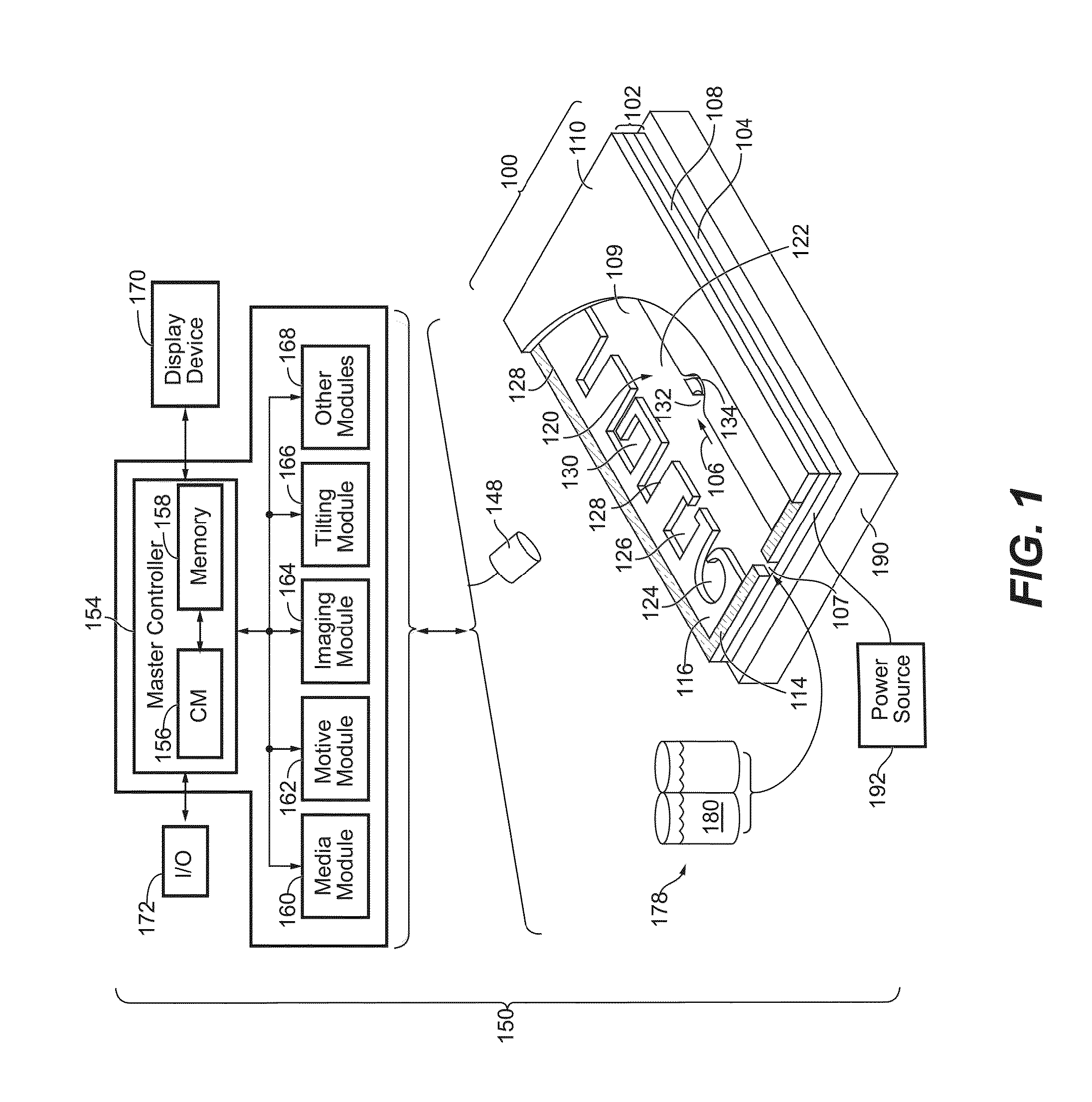Single-sided light-actuated microfluidic device with integrated mesh ground
a microfluidic device and light-actuated technology, applied in the field of single-sided optoelectrowetting devices with integrated mesh ground, can solve the problems of affecting the electrowetting surface, affecting the flow rate of liquids, and complicating the introduction of droplets
- Summary
- Abstract
- Description
- Claims
- Application Information
AI Technical Summary
Benefits of technology
Problems solved by technology
Method used
Image
Examples
example 1
Movement of Water Droplets on a SSOEW-Configured Substrate
[0185]The movement of a 1 microliter droplet of water (conductivity 10 mS / m) was successfully demonstrated on the device of FIG. 1. The device featured a gold mesh ground that had a thickness of substantially 50 nm. Individual wires of the mesh had a width of substantially 10 microns and pitch of substantially 2 mm (β=0.5%). Prior to operation, the surface of the device was primed with silicone oil to reduce friction.
[0186]An AC voltage bias was applied between the ITO electrode and the mesh ground electrode. Structured light was then projected onto the substrate proximal to the droplet being moved, such that the light at least partially contacted the droplet. Droplets were successfully moved by shifting the location of the structured light. In this experiment, light having a square shape roughly the same size as the droplet was used. A maximum velocity of 0.33 cm / s was measured using a 40 ppV bias at 10 kHz.
[0187]The experim...
example 2
Movement of PBS Droplets on a SSOEW-Configured Substrate
[0188]Subsequently, a SSOEW-configured substrate was built having a photoconductive layer of substantially 1 micron thickness, a first dielectric layer of substantially 150 nm thickness, a second dielectric layer of substantially 2.5 nm in thickness, a mesh electrode having wires consisting of a gold layer of substantially 25 nm in thickness with an underlying titanium layer of substantially 10 nm in thickness, and a hydrophobic coating comprising a monolayer of octadecyltrimethoxysilane. The photoconductive layer consisted essentially of hydrogenated amorphous silicon (a-Si:H), and the first and second dielectric layers were made from Alumina (i.e., aluminum oxide deposited by ALD). The mesh electrode was interposed between the first and second dielectric layers, and the wires of the mesh electrode were substantially 10 microns in width, with a pitch of approximately 300 microns.
[0189]A droplet of PBS (approximately 1.5 microl...
PUM
 Login to View More
Login to View More Abstract
Description
Claims
Application Information
 Login to View More
Login to View More - R&D
- Intellectual Property
- Life Sciences
- Materials
- Tech Scout
- Unparalleled Data Quality
- Higher Quality Content
- 60% Fewer Hallucinations
Browse by: Latest US Patents, China's latest patents, Technical Efficacy Thesaurus, Application Domain, Technology Topic, Popular Technical Reports.
© 2025 PatSnap. All rights reserved.Legal|Privacy policy|Modern Slavery Act Transparency Statement|Sitemap|About US| Contact US: help@patsnap.com



